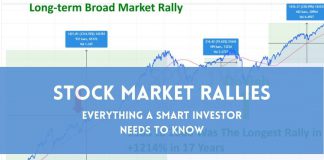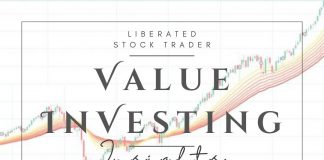Traders Guide to Identify, Trade & Profit From a Stock Rally
A stock market rally is a sustained rise in equity price trends, typically characterized by positive investor sentiment and strong buying activity, which pushes share prices higher.
What Does Over-Leveraged in Finance & Investing Mean?
Over-leverage is using excessive debt to finance investments or business operations, leading to excessive risk. Financial risk increases as the level of debt exceeds the ability to generate sufficient returns to cover the interest payments and principal repayment obligations.
Avoiding Freeriding & Good Faith Violations in Stocks
Freeriding refers to an investor buying and then selling securities in a cash account without having the necessary settled funds to cover the purchase. This action violates regulations set forth by governing financial bodies and can lead to a freeze on the investor's ability to trade.
Investors Guide to the Fixed Charge Coverage Ratio (FCCR)
FCCR is a financial metric determining how well a business can cover its fixed charges with its operating income. It is calculated by dividing Earnings Before Interest and Taxes (EBIT) by fixed charges. Fixed charges typically include expenses such as interest expense and lease payments.
An Investors Guide to Dupont Analysis with Examples & Formulas
By breaking down ROE into profitability, efficiency, and leverage factors, DuPont Analysis allows investors and analysts to pinpoint the strengths and weaknesses in a firm's financial health.
A Practical Investors Guide to Return on Common Equity (ROE)
Return on Common Stockholder's Equity (ROCE) is a financial ratio measuring the profitability relative to the common equity shareholders have invested in a company.
An Investors Guide to Operating Profit Margin with Examples
Operating Profit Margin, often represented as a ratio or percentage, reflects the proportion of revenue after accounting for the costs and expenses associated with a company's primary operations.
Investors Guide to Return on Average Equity (ROAE)
Return on Average Equity (ROAE) is a financial performance metric that indicates how effectively a company generates profit relative to its average shareholders' equity.
Investment Turnover for Investors: Examples & Calculation
Investment turnover is calculated by comparing a business's revenue to the sum of its equity and debt, providing insight into the company's management's ability to deploy its financial resources.
Investors Guide to the Long-Term Debt Ratio
The Long-term debt ratio is a financial metric investors use to assess a company's use of long-term debt for financing its operations. A high long-term debt ratio over 25% indicates a higher investing risk, whereas a low ratio indicates a company is in better financial shape.
Investors Guide to the Net Profit Ratio with Examples & Calculations
The Net Profit Ratio is a key financial ratio for better investing, telling us how efficiently a company generates profit compared to its revenue and competitors.
Investor Guide to Return on Capital Employed (ROCE) Formulas & Examples
By allowing investors and analysts to measure the returns a company generates from its employed capital, ROCE serves as a magnifying glass over the business's operational effectiveness.
Investors Guide to the Debt-to-EBITDA Ratio: Calculator & Examples
The Debt-to-EBITDA ratio assesses a company's ability to pay off its debt. It compares a company's total debt to earnings before interest, taxes, depreciation, and amortization (EBITDA).
A Traders Guide to Forex and the Risks of Margin Trading.
Buying and selling currency in Forex trading is for advanced speculators. Because currency fluctuations are so small, a margin is required, making it a volatile and highly risky endeavor.
Investor Insights: Accounts Payable Turnover Ratio & Liquidity
The accounts payable turnover ratio quantifies how often a company pays off its suppliers within a specific period. To calculate it, one divides the total purchases made on credit by the average accounts payable for the same period.
101 Stock Market Terms Every Good Trader & Investor Knows
We explain the 101 most important stock market terms and decipher financial jargon with simple definitions and practical examples.
Using the Buffett Indicator to Understand Market Valuation
The Buffett Indicator helps gauge stock market valuation by dividing the total market capitalization by GDP, offering a macroeconomic perspective on market value.
Jordan Belfort’s Real Net Worth. The Wolf of Wall Street Scam!
Our calculations suggest Jordan Belfort's net worth is close to -$40 million when considering his sizable income and outstanding -$97.5 million debt to 1,513 victims of the Stratton Oakmont scam.
What Are Cyclical & Noncyclical Stocks & How To Trade Them?
Macroeconomic or systemic changes within the broader economy influence a cyclical stock's price. These stocks are renowned for mirroring the economic cycles through the growth, boom, bust, and recovery phases.
12 Proven Strategies for Buy-and-Hold Stock Investing
Based on our 30-year research, adopting a buy-and-hold stocks strategy is annually 4% more profitable than actively trading stocks or investing in alternative assets such as corporate bonds, real estate, gold, or treasuries.









